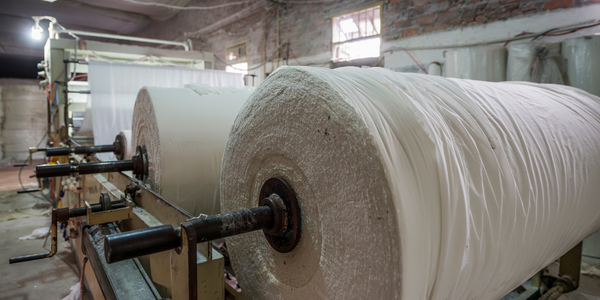Technology Category
- Cybersecurity & Privacy - Security Compliance
Applicable Industries
- Consumer Goods
- Paper & Pulp
Applicable Functions
- Quality Assurance
Use Cases
- Smart Contracts
- Time Sensitive Networking
About The Customer
Tropical Smoothie Café, LLC is a restaurant franchise that has been in operation for over 20 years. The company started as a single smoothie shop in Tallahassee, Florida, and has since grown into a nationwide franchise with over 600 locations. Tropical Smoothie Café offers a variety of healthy food options, including sandwiches, flatbreads, wraps, and select vegan options, in addition to its signature smoothies. The company is committed to its mantra of 'Eat better. Feel better.' and is projected to continue its growth.
The Challenge
Tropical Smoothie Café, a rapidly growing restaurant franchise, was facing challenges with its franchise agreement process. The process was heavily reliant on paper contracts, which were not only costly to mail but also time-consuming to manage. The franchise agreement process was subject to Federal Trade Commission (FTC) mandates, which required specific time intervals between stages of the transaction. This meant that the company had to wait for physical contracts to be returned, manage missing signatures or omitted information on returned contracts, and then file and store these documents. This laborious process was straining the company's resources and complicating the timeline for opening new franchises.
The Solution
To streamline its franchise agreement process, Tropical Smoothie Café implemented Nintex AssureSign, an electronic signature solution. This platform not only enabled the company to digitize its signature processes but also ensured compliance with all FTC requirements applicable to franchise agreements. Nintex AssureSign provided a cost-effective solution with its delayed signing feature and a simple drag-and-drop interface for one-off documents. This allowed Tropical Smoothie Café to process their agreements electronically, saving time and effort previously spent on managing paper contracts. The digital transformation of the signing process also improved the franchisee experience, driving more potential interest.
Operational Impact
Quantitative Benefit

Case Study missing?
Start adding your own!
Register with your work email and create a new case study profile for your business.
Related Case Studies.
.png)
Case Study
Improving Vending Machine Profitability with the Internet of Things (IoT)
The vending industry is undergoing a sea change, taking advantage of new technologies to go beyond just delivering snacks to creating a new retail location. Intelligent vending machines can be found in many public locations as well as company facilities, selling different types of goods and services, including even computer accessories, gold bars, tickets, and office supplies. With increasing sophistication, they may also provide time- and location-based data pertaining to sales, inventory, and customer preferences. But at the end of the day, vending machine operators know greater profitability is driven by higher sales and lower operating costs.

Case Study
Wireless Improves Efficiency in Compressed Air Systems
Hollingsworth and Vose wanted to improve the efficiency of their compressed air system, lower the electricity expense component of manufacturing cost in their commodity industry, and conserve energy leading to lowered greenhouse gas emissions. Compressed air systems degrade over time and become leaky and inefficient. Hollingsworth and Vose wanted to increase the frequency of system inspections without paying the high cost of manual labor.

Case Study
Series Production with Lot-size-1 Flexibility
Nobilia manufactures customized fitted kitchens with a lot size of 1. They require maximum transparency of tracking design data and individual processing steps so that they can locate a particular piece of kitchen furniture in the sequence of processes.

Case Study
American Eagle Achieves LEED with GE LED Lighting Fixtures
American Eagle Outfitters (AEO) was in the process of building a new distribution center. The AEO facility management team decided to look at alternate options for lighting layout that could provide energy and maintenance savings. AEO would need a full-time maintenance employee just to replace burned-out fluorescent tubes.





